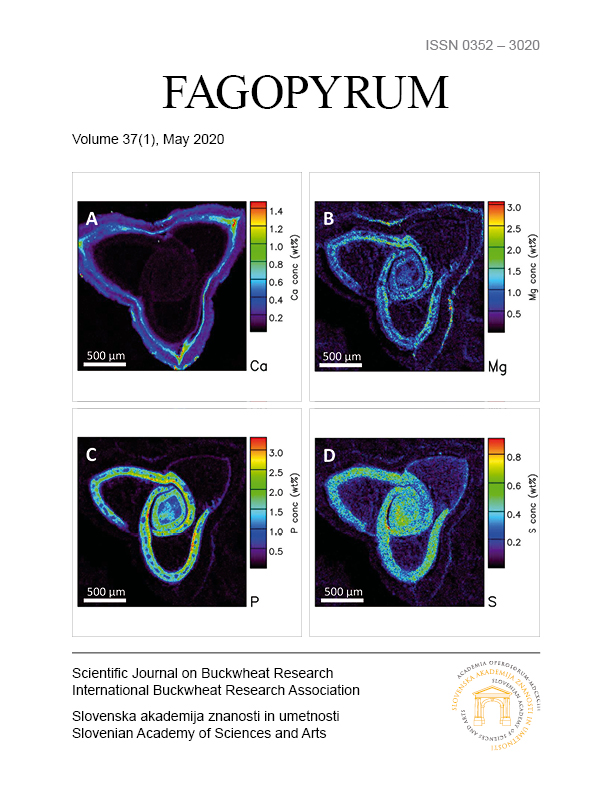Application of micro-PIXE (particle induced X-ray emission) to study buckwheat grain structure and composition
DOI:
https://doi.org/10.3986/fag0012Abstract
Tartary buckwheat (Fagopyrum tataricum Gaertn.) is a gluten-free pseudo-cereal crop with a grain nutrient profile that makes it an excellent alternative foodstuff. The distribution of calcium (Ca), magnesium (Mg), phosphorus (P) and sulphur (S) was investigated by micro-PIXE (particle induced X-ray emission) to resolve allocation and concentration of the elements in nine distinct grain tissues. Magnesium, P and S were preferentially allocated to the cotyledons and the embryonic axis (both inner and outer tissues), and Ca was predominant in the pericarp where two Ca-rich layers were observed. Allocation of P and S to aleurone suggests that this layer of cells, although not as prominent as in cereal grain, is rich in phytate and proteins. Quantitative information on spatial distribution of mineral elements in the edible grain may be useful in the technological processing of the grain and particularly in reducing the amount of mineral-element loss during milling.

